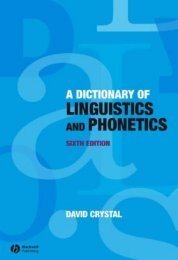url?sa=t&source=web&cd=3&ved=0CC0QFjAC&url=http://www.teachingenglish.org.uk/sites/teacheng/files/B369-Young-Learners-Activity-Book_v10
url?sa=t&source=web&cd=3&ved=0CC0QFjAC&url=http://www.teachingenglish.org.uk/sites/teacheng/files/B369-Young-Learners-Activity-Book_v10
url?sa=t&source=web&cd=3&ved=0CC0QFjAC&url=http://www.teachingenglish.org.uk/sites/teacheng/files/B369-Young-Learners-Activity-Book_v10
You also want an ePaper? Increase the reach of your titles
YUMPU automatically turns print PDFs into web optimized ePapers that Google loves.
TeachingEnglish <strong>Young</strong> <strong>Learners</strong> <strong>Activity</strong> <strong>Book</strong><br />
Activities<br />
<strong>Activity</strong> 38: The snake game<br />
Marina Kolar – Croatia<br />
Age: 7+<br />
10–20 minutes Large classes? No Mixed level? Yes<br />
Materials: board and markers (either magnets or some sort of sticker,<br />
such as a sticky note), a dice.<br />
Organisation: Whole class.<br />
Aim: To practise or revise vocabulary and structures.<br />
Description: Children in the class are divided into two teams. Individuals from each<br />
team must answer questions dictated by a square on the board snake.<br />
Preparation: You will need to prepare a series of questions based on the categories<br />
in your snake (see Step 1 below).<br />
Procedure<br />
1. Draw a large snake on the board and divide its body into a number of squares (at least 15).<br />
In each square write a letter as a prompt to the category of question. For example, V<br />
might be a ‘vocabulary’ question; C might be ‘correct the sentence’, while O might be<br />
‘odd man out.’<br />
2. Divide the class into two teams. Explain the rules of the game. A member from each team<br />
comes to the front and shakes a dice. According to the number on the dice, they move<br />
forward up the snake’s body. On reaching the number, the child places the marker on the<br />
square and has to answer a question, according to the letter. If the child is not sure of the<br />
answer, they can ask the rest of the team.<br />
3. If the child answers correctly, the marker remains on the square. If the question is answered<br />
incorrectly, the child moves the marker three squares down the snake. The winning team is<br />
the first to reach the snake’s tongue.<br />
Notes<br />
Other categories you might consider are ‘translation’, ‘spelling’ and ‘pronunciation’.<br />
Larger classes will need more teams.<br />
82<br />
© British Council 2012





